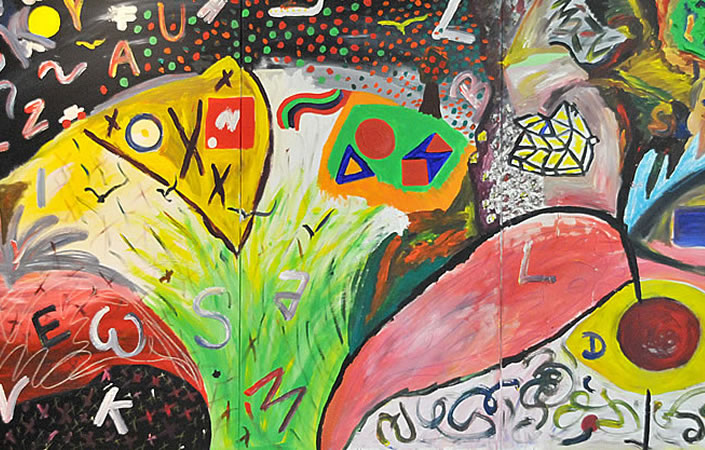
In Berlin, people are queueing up to see an exhibition comparing expressionist and impressionist painting. It is a very regulated experience of art: this is well established, known art. There will not be any exceeding challenges, irritations or surprises. Here, on the other hand, it is quiet and empty. Nobody knows yet what these sculptures and performances might have to say. These sculptures have not yet been classified and are on display without a commentary. The exhibition in Berlin puts the spotlight on something that is known and has been evaluated. We, on the other hand, are encountering something different here: openness and the undefined. We have to find our own position; there is no official interpretation to relieve us of having to have the courage of our own opinion. We have to give our own judgement.
Companies are nowadays almost desperately searching for innovation, vibrancy, creativity and agility. Such places as these here can show us the prerequisite: the ability to open up for something that has not yet been tested, which is definitely not »more of the same«: something provocatively different. Something that instigates conflict, causes uncertainty and that is risky to evaluate.
This kind of context allows for new experiences and may give way to new perspectives. These visits are a metaphor for companies. They demand some distance from the tried and tested. That is one of the reasons I love these places. Here, I can feel that I also have the right to stand in front of a sculpture and be utterly clueless as to what it might tell me. And to then go on to discover another one that opens up a new perspective.
What does that have to do with companies, you might ask. I still experience companies attempting to be transnational – often successfully so. Leadership is considered to be a globally defined behaviour, the approach is inclusive. Groups from a wide range of cultures are learning to apply this model behaviour. However, while companies may be transnational and culturally global, the markets are multinational and are in fact in the process of becoming even more »multi« and diverse again. Like the pieces of art in this space, they contain difference, surprise, strangeness and sometimes provocation.
In my extensive travels throughout Asia and my encounters with many people at work, I have learned that we need to concentrate more on »multi« than on »trans« or »mono«. By retreating into trusted knowledge and established patterns, we will never meet the diverse otherness of cultures and ways of life. Our introverted orientation will fail to direct us to the dynamics of our dazzlingly diverse world and its needs.
Let us return to innovation, agility, flexibility: in order to be able to create a culture of openness, one must expose oneself to the new and yet uninscribed and allow it into our midst. Of course there are things I do not understand, things that leave me clueless and looking for what I know – and yet at the same time I am aware that it is these very encounters with the »other than I« that give me an understanding of difference. I realize that it takes internal difference for us to be able to cope with the diversity of the outside, which requires vibrant and creative adaptation.
Rüdiger Müngersdorff
